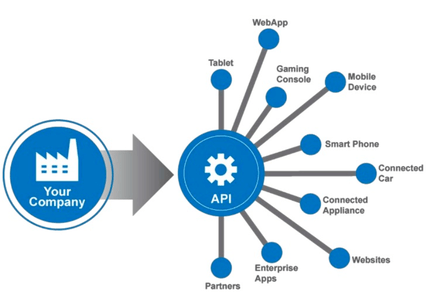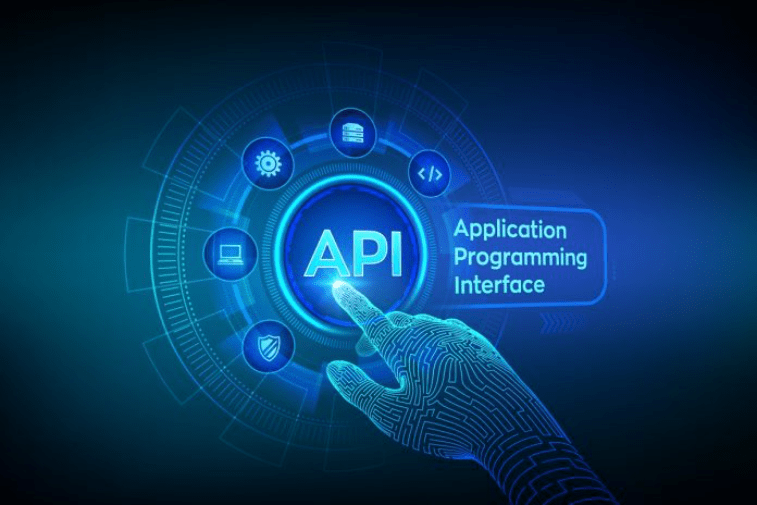Application programming interfaces or APIs facilitate software development and innovation, making it easy and secure for applications to exchange data and functionality.
APIs allow you to communicate with other products and services without knowing how your product or service is implemented. This simplifies app development, saving time and money.
Table of Contents
What is the Application Programming Interface (API)?
An application programming interface, or API, allows companies to disclose the data and functionality of their applications to external third-party developers, business partners, and the internal divisions of their companies.
It allows services and companies to communicate with each other and take advantage of each other’s data and functionality through available documented interfaces. Developers do not need to know how the API is implemented; They simply use the interface to communicate with other products and services. The use of APIs has increased over the last decade, and today the most popular web applications are not possible without APIs.
Just go through this awesome video below further explaining API
How does an Application programming interface (API) work?
An API is a set of defined rules that describe how computers or applications communicate with each other. The API sits between an application and a web server and acts as an intermediary layer that processes data transfer between systems.
Here is how the API works:
A. Enables the API call to retrieve client application information – also known as Request. This request is processed from the application to the web server via the Uniform Resource Identifier (URI) of the API and contains the request verb, headers, and sometimes the request body.
B. After receiving a valid request, the API calls the external program or web server.
C. The server sends a response to the API with the requested information.
D. The API transfers the data to the application by making an initial request.
Data transfer varies depending on the web service used, but all processing of requests and responses is done through an API. Although the user interface is designed for human use, APIs are designed for use on computers or applications.
APIs provide security by design because their position as intermediaries facilitates the capture of functionality between the two systems — the API endpoint separates the utilized application from the service provider infrastructure. API calls generally have authorized credentials to reduce the risk of attacks on the server and may restrict access to the API gateway to reduce security threats. Also, during conversion, HTTP headers, cookies, or query string parameters provide an additional level of security for the data.
For example, consider the API that provides payment processing services. Customers can enter their card details on the front of the application for any e-commerce store. The payment processor does not require access to the user’s bank account; The API generates a unique token for this transaction and is included in the API call to the server. This ensures a high level of protection against potential hacking threats. Also, learn about marketing automation
Why do we need an API?

Whether you are managing existing tools or designing new ones, you can use the application programming interface to simplify the process. Some of the major advantages of APIs include:
Improved collaboration: The average company uses about 1,300 cloud applications (Link lives outside IBM), most of which are disconnected. APIs enable integration so that these platforms and apps can communicate seamlessly with each other. Through this integration, companies can automate workflows and improve office collaboration. Without APIs, many companies lack connectivity and suffer from information spheres that compromise productivity and performance.
Easy innovation: APIs provide flexibility, allowing companies to build relationships with new business partners, provide new services in their existing market and, ultimately, access new markets that can generate huge returns. And drive digital transformation. For example, the company line starts with just seven lines of code in the form of an API. Since then it has partnered with many of the world’s largest companies, diversifying to provide loans and corporate cards, and most recently worth the US $35 billion. also, learn about bounce rate
Data Monetization: Most companies choose to provide free APIs at least initially to increase the audience of developers around their brand and to build relationships with potential business partners. However, if the API provides access to valuable digital assets, you can monetize them by selling access (known as the API economy). When AccuWeather (link outside IBM) launched its self-service developer portal to sell a wide range of API packages, it was able to attract 25,000 developers, sell 12,000 API keys and build a thriving community in the process. It only took 11 months.
Additional security: As mentioned above, APIs create an additional security layer between your data and the server. Developers can further strengthen API security by using token, signature, and Transport Layer Security (TLS) encryption; By implementing the API Gateway to manage and authenticate traffic; And practicing effective API management. Learn about what is KPIs?
Simple API examples
Just go through this video explaining API with example
As APIs allow companies to open access to their resources while maintaining security and control, they have become an important element in modern business. Here are some prominent examples of application programming interfaces you may encounter:
Universal Login: A popular API example is a metric that allows people to log in to websites using their FB, Twitter, or Google profile login details. This feature allows any website to take advantage of the API from one of the most popular services to quickly authenticate a user, saving time and hassle in setting up a new profile for each website service or new subscription. Is
Third-party payment processing: For example, the “Pay with PayPal” function you see now on e-commerce websites works through an API. It allows individuals to pay for products online without disclosing any sensitive data or providing access to unauthorized persons.
Travel Booking Comparison: Travel booking sites connect thousands of flights showing the cheapest options for each date and destination. This service is made possible by the API, which allows the application users to access the latest available information from hotels and airlines. With the exchange of autonomous data and requests, the API dramatically reduces the time and effort involved in checking available aircraft or facilities.

Google Maps: One of the best examples of a good API is the Google Maps service. In addition to core APIs that display static or interactive maps, the app provides users with directions or points of interest using other APIs and features. Through geolocation and multiple data layers, you can communicate with the Maps API when planning travel routes or tracking objects such as delivery vehicles.
Twitter: Each tweet has detailed key features including author, unique ID, message, timestamp posted, and geolocation metadata. Twitter makes tweets and replies publicly available to developers and allows developers to post tweets via the company API.
Hope! You find this article helpful. Don’t forget to subscribe and share. Thank You.






3 Comments